Planting aconite in open ground and caring for a perennial
If your plot is small, all sunny places are occupied by beds, and lush flowers do not want to grow in shaded flower beds, do not worry. Planting aconite in the open field will solve the problem, this plant does not like the scorching sun and is great blooms in the shade... Breeders have bred many varieties: under trees you can plant low, up to half a meter high bushes; two-meter giants will hide an ugly fence or shed, climbing species are suitable for decorating a gazebo. When properly cared for, aconite blooms for a very long time and can beautify the site from mid-summer to autumn. In wild plants, inflorescences are mainly blue and purple, varieties of yellow, white, pink colors have been bred for cultural cultivation, sometimes the flowers are painted in 2 contrasting colors.
Flowerbed preparation
This flower is unpretentious, but planting in sandy and rocky soils with high underground waters will not suit him. Look at the soil in the flower garden. If it's not fertile enough, add humus and compost. Add sand to heavy clay soil, it will make the earth looser and will not allow excess moisture to stagnate.
In the future, you will need to sprinkle the earth around the stems from time to time. You can combine this work with mulching: use sawdust, compost, peat, straw, grass without roots. So you will both add nutrients to the soil, and improve the topsoil, and make the maintenance of the flower garden less laborious. A layer of mulch with a thickness of at least 5 cm will prevent weeds from germinating, and after rains, a crust will not form on the surface.
Advice
Do not plant aconite where direct sunlight falls in the middle of the day. The plant can get leaf burns.
Although in the wild, the flower grows along the banks of rivers and lakes, on too damp soils it will start to hurt. Is your entire site on wetlands? No problem! Arrange a drain, create an elevation from the filled soil with a hydrogel, and the flowers will live there for several years. The hydrogel will absorb excess moisture during prolonged rains, and during the dry period it will gradually release the liquid into the ground and prevent the roots from drying out.
Aconite planting methods
Planting aconite is carried out in different ways:
- seeds;
- dividing the bush;
- cuttings;
- tubers.
The first method is the most difficult and time consuming, it is mainly used for breeding new varieties. The seeds must be sown in the fall in open ground so that they overwinter under the snow. If you want to grow aconite through seedlings, keep the seeds cold until April, then sow in the ground. When 2 true leaves appear, cut the seedlings into separate cups and keep them at home all summer. In August, plant the seedlings in a permanent place in the open field, the distance between the bushes should be at least 25 cm. You will have to wait 2 years for flowering from young bushes.
There are not everywhere shops where you can buy aconite roots, and when buying on the market, a flower that has blossomed on a bush often has nothing to do with what you were shown in the picture. Look at the neighboring areas, is there a beautiful inflorescence there? Every 4 years, the bushes need to be rejuvenated, at which time neighbors can share a part of the plant with you. If you want to propagate your flower, in the spring, dig up a few shoots with roots, cut off the top of the stem so that there are 3 buds on the shoots. Planting should be done in a deep hole that is large enough for the roots to be upright. Put 20 g of compound fertilizer at the bottom and lightly sprinkle it with earth.Plant the plant 2 cm deep and water.
In spring, planting with young shoots is possible. Cut the green cuttings 11 to 13 cm in length. Dip the cut in a growth promoter and bury the bottom in the ground to root. Cover the seedlings with a film or non-woven fabric for frost protection... When the bushes develop and form, plant them in a flower bed.
In the fall, you can dig several rhizomes from under an adult plant. Dig holes 5-7 cm deep, apply fertilizer to the bottom layer of the earth, place 3 tubers in each hole and bury.
Caring for flowering perennials
In order for aconite to grow in one place for many years and continue to delight the eye with magnificent flowering arrows, it is necessary to create suitable conditions for its development. Such giants require good nutrition, they quickly draw out all the useful components from the soil. Every spring, fill the soil in the flower garden with compost, so you will feed the plant and make it easier for yourself to care for the flower bed. When the buds begin to bloom, apply mineral or organic fertilizers under the bushes, and the flower bed will sparkle with bright colors.
Aconite is undemanding to care, it tolerates drought well. This does not mean that, having planted flowers, you can forget about them. The bushes will grow and develop, but the inflorescences will turn out to be small and inconspicuous. It is not so difficult to water a flower bed in dry weather, weed and loosen the soil. Plants will thank you for the minimum effort with a bright palette of colors. If you have previously mulched the top layer, the need for loosening and weeding will be minimized.
Advice
Do not let the flowers run wild, if the aconite is no longer needed, dig up all the roots. Cultivated varieties contain few poisons, but when there is no care for the plants, the concentration of toxic substances increases.
Withering inflorescences continue to feed, and the bush may not have enough strength to develop young buds. Timely remove the shoots that have finished flowering, and then bright arrows will decorate the flowerbed until the cold weather. Do not let the bushes grow too much, dig up extra shoots every 4 years. Autumn care is to protect the roots in the open field from freezing. Before the onset of cold weather, shortly cut off all the stems and cover the rhizomes with a layer of sawdust or peat 20 cm thick.
Do not forget that aconite contains poisons. Wear protective gloves during work, which must be washed after work. Wash your hands and face with soap and water before drinking and eating. If you have herbivores, make sure that no pieces of aconite get into their food. In folk medicine, various infusions of this plant are used. It is not recommended to make them yourself: depending on the variety and living conditions, the composition of biological substances in different plants is different. As a result, you may get a completely different drug that you wanted to prepare. For treatment, it is better to purchase medicines at a pharmacy.
Diseases and pests
Although aconite contains poisons, there are pests that can eat the plant:
- aphid;
- slugs;
- nematodes.
To kill parasites, treat the flower garden with a solution of copper sulfate or insecticides. If the flower is badly damaged and it was not possible to save it, dig up its entire root system together with the earth and throw it into the fire. Planting aconite in the vacant hole is undesirable for several years: insect larvae could remain in the soil.
Susceptible to flower and disease:
- powdery mildew;
- ring mosaic;
- rotting roots.
To prevent infection from hitting the plant, do not thicken the planting and make good drainage in the flower bed. It is better to destroy diseased specimens, and pour the remaining bushes with a disinfectant solution. EO preparations and proper care are good prevention of diseases.
Output
The easiest way to get planting material is to dig out part of the bush along with the roots and transplant it into a flower bed.Further care for aconite in the open field is simple: watering, feeding, removing wilted inflorescences. To avoid loosening and weeding, cover the flower garden with a layer of mulch.
Care must be taken when working in a flower garden, as all parts of the plant contain poison. Plant aconite separately from edible crops; its roots can be confused with herbs. Do not use tinctures of roots, leaves and inflorescences for oral administration for medicinal purposes, these procedures can only be carried out under the guidance of a herbalist.
With proper care, aconite in the open field gradually loses its toxic properties. For the safety of your family members and guests, do not disregard a single bush, and immediately destroy unnecessary specimens. With careful handling, the flower will not harm anyone, but will serve as a decoration for your site.

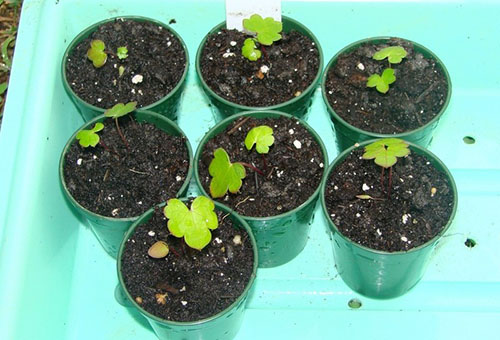
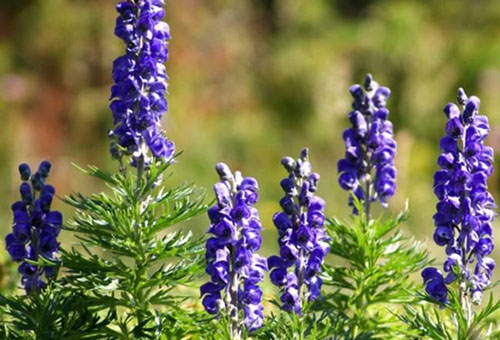
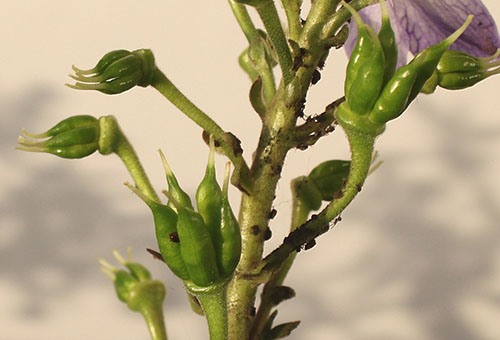

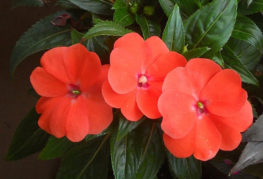

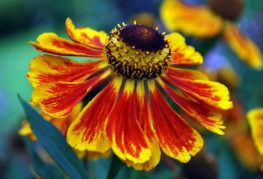
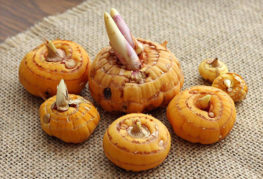
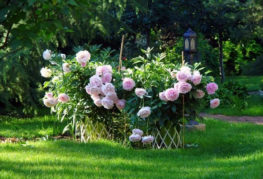
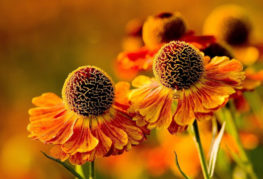
and will be published shortly.